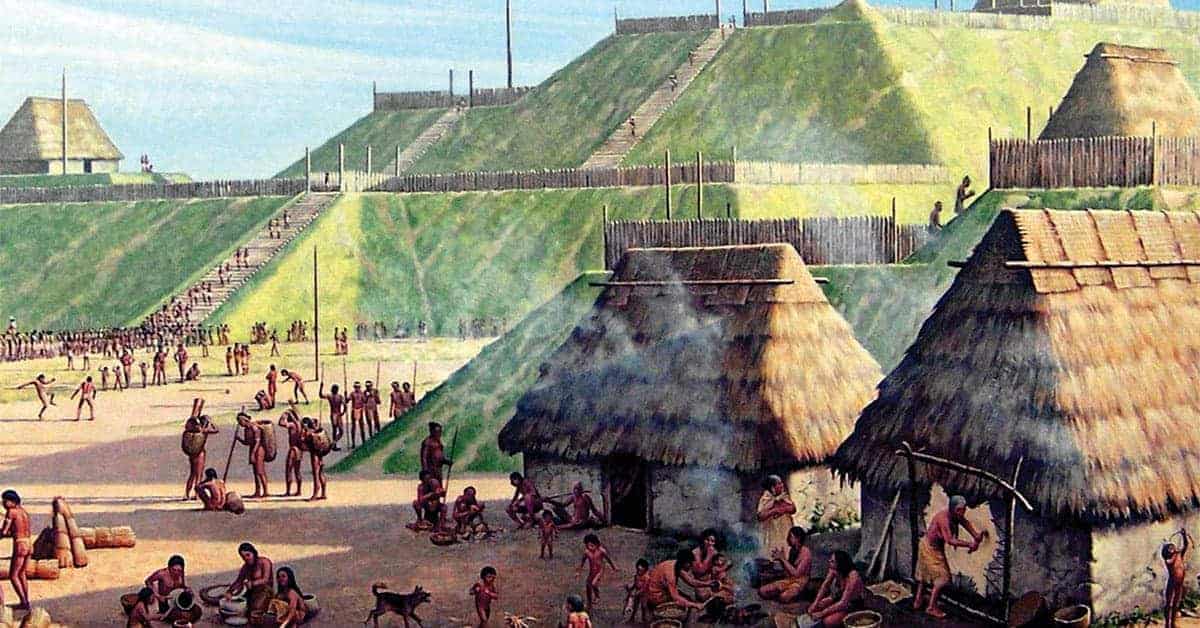‘Lost’ cities always capture the attention whether they are real or fictional like the city of Atlantis. One of America’s greatest real lost cities is Cahokia, a huge, bustling location that was larger than London or Paris at its peak in the 11th century. At that time, its population was approximately 30,000 which made it the largest North American city north of Mexico. Today, Cahokia Mounds remains and is one of only eight World Heritage sites in the United States. However, it was once the location of a thriving city until its population completely disappeared by the end of the 14th century. What was Cahokia and what happened to it?

The North American Metropolis
Cahokia was a large North American settlement located in southern Illinois around eight miles from modern-day St. Louis. Although the exact date of its formation is unknown, word spread in the late 10th century AD throughout the southeast, and thousands of people visited for feasts and rituals. A number of these visitors were impressed by what they saw and elected to stay.
It is important to learn more about the city as it provides a very different insight into the way Native Americans lived in the pre-Columbian era. Even today, the myth of the ‘noble savage’ is prevalent as many people still view American Indians of the age as backward individuals that needed to be civilized. In reality, cities like Cahokia show that Native Americans were extremely advanced.
Cahokia was a cosmopolitan and sophisticated city by the standards of the age. It was inhabited by a diverse range of peoples including the Ofo, the Choctaw, the Pensacola and the Natchez. According to archaeologists that conducted strontium tests on the teeth of buried remains, approximately one-third of them were not from Cahokia.

A Thriving City
Cahokia was a departure from the usual practice of building a town or city near sources of food and water and close to trade routes. The area was an excellent source of deer, timber and of course, fish from the Mississippi River but the land was extremely prone to flooding. Archaeologists now believe that Cahokia was originally built as a kind of pilgrimage city where people from the rest of the Mississippi region would visit for religious events.
Up until the beginning of the 11th century, Cahokia was probably a popular meeting point, but suddenly, it became a focal point as an increasing number of people settled there. There is a suggestion that settlers were inspired by a sighting of Halley’s Comet in 989. They created ceremonial mounds at the site, and many of them line up with the position of the sun during the winter solstice.
It was unquestionably a planned city as whoever created it successfully predicted that if they built it, people would come. When it was completed, Cahokia was around nine square miles in area and the Mississippians built around 120 earthen mounds in total. Experts estimated that around 55 million cubic feet of mud were dug up over the course of a few decades to create all the mounds.
The largest mound in the city, known as the Monk’s Mound, was home to Cahokia’s largest building and city center. The political and spiritual leaders of the city met there in a structure surrounded by a timber palisade that is two miles in circumference. The Monk’s Mound towered some 30 meters above a giant central plaza and had a total of three ascending levels. A person standing at the highest level could be heard across the entire Grand Plaza. The giant mound was created next to a circle of huge timber poles that is sometimes dubbed ‘Woodhenge.’
Most of the city’s inhabitants lived in homes with one room; these residences were around 15 feet long and 12 feet wide. The walls were constructed with wooden posts covered in mats along with a thatched roof. While Cahokia only remained as a major center for a relatively brief period, its cultural impact was far reaching.

